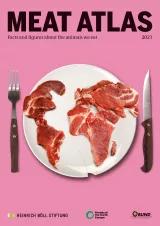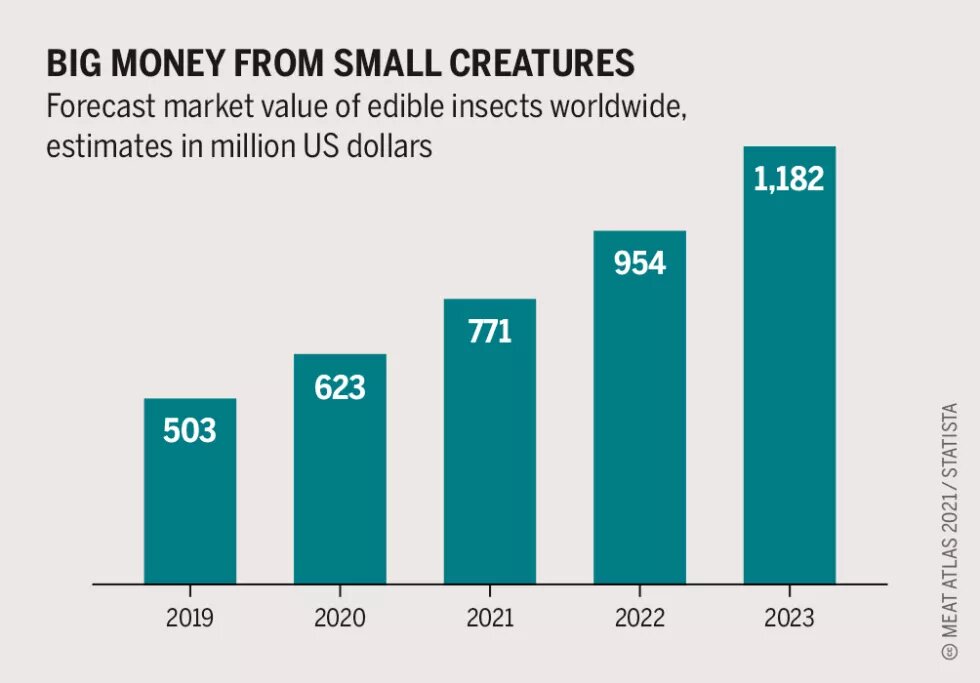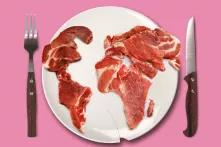
Adding insects to our menus could help overcome the world’s food-supply problems. But the industrial production of insects is controversial: would it be useful or dangerous?

Mealworm-protein bars, insectburgers and noodles made from insect flour: flip through lifestyle magazines and you might easily think that entomophagy – the consumption of insects – has arrived in Europe. But it is rather the mixture of newsworthiness, the exotic, and the “yuck factor” that makes the consumption of insects such a popular media topic. In Europe, insects are not something the vast majority of people expect to see on their plates.
Things are different in much of the rest of the world. In over 130 countries and for an estimated 2 billion people, beetles, maggots and crickets are a traditional part of the everyday diet. Insects deliver valuable vitamins and minerals, along with lots of protein. Because a wide range of insects are available at different seasons, such a diet is always varied.
Companies that want to popularize insect-based foods in the West put forward convincing arguments: ecological benefits, animal protection, and above all, the high protein content of such foods. The number of these firms has risen sharply in recent years. The European Union’s Novel Foods Regulation of 2015 created conditions that permit the easier approval of individual insect species as food from the start of 2018. In doing so, it followed the lead of the Food and Agriculture Organization of the United Nations (FAO), which for the past 10 years has promoted the idea of using insects as a major food source so as to feed the world’s growing human population. As of May 2021, the first-ever EU-wide approval of insects for human consumption was granted for yellow mealworms (Tenebrio molitor). ‘Transition measures’ in the 2018 regulation are allowing the use of insects at national level already. Three other insects – lesser mealworms (Alphitobius diaperinus), house crickets (Acheta domesticus), and migratory locusts (Locusta migratoria) – are sold in some EU countries. Further applications were made in 2019, for instance for the larvae of the black soldier fly (Hermetia illucens).
From an evolutionary point of view, insects are one of humanity’s oldest sources of protein. A large number of insect species are potentially very valuable foods, though their protein content and the amount of vitamins, unsaturated fatty acids (omega 3 and 6) and minerals they contain varies considerably according to the species, feeding and stage in the life cycle (egg, larva, pupa or adult).
In Western industrialized countries it is mainly small start-ups that are trying to establish themselves on the market with the first, relatively expensive, insect-based products. These firms hope to cut their costs and boost their sales through more efficient breeding methods and industrial-style production techniques. The authors of a study by Barclays, a British bank, predict that the “insect protein market” in Europe and North America might be worth as much as 8 billion US dollars by 2030, making it attractive for large food manufacturers.
Unlike in Asia, Africa and South and Central America, entomophagy in Europe and North America is rarely seen from a culinary point of view. The target consumers in Europe are mainly people who want to avoid eating meat or consuming other animal products for ecological or ethical reasons. In contrast to the slaughter of cattle or pigs, cold-blooded insects are chilled so they fall into a natural torpor and die without experiencing pain or stress.
At the same time, most species of insects can be raised en masse in factories. Breeding insects requires less space, feed, water and energy than traditional livestock-keeping – at least in theory. In practice, there is a shortage of empirical data, even in countries where insects are a regular part of the menu. There, most of the insects consumed are caught from the wild. Insects are indeed bred in China, Southeast Asia and southern Africa, but the proportion of farm insects accounts for only 2 percent of total consumption.
Most insect farms in Asia are run by small-scale farmers. Their experience is often not applicable to European conditions. They often do not raise their mini-livestock in enclosed facilities, but rely instead on the local climatic conditions and on ecosystems such as mangroves. That is especially true for many beetles and larvae that are of greater culinary interest than the species currently approved for consumption in Europe. Examples are the deep-fried water beetles regarded as a delicacy in northern Thailand, and the eggs of waterbugs, sold in Central and South America as “Mexican caviar”.
The demand for edible insects is rising, and there is a danger of overstretching natural populations, causing a collapse in numbers, as has happened with overfishing in the oceans. It is also questionable whether the global hunger for insects can be satisfied by industrialized farming. And experts warn that raising insects could repeat the same mistakes as with pigs, chickens and cattle, which have led to the loss of genetic diversity and the emergence of unexpected diseases that can destroy entire stocks.



